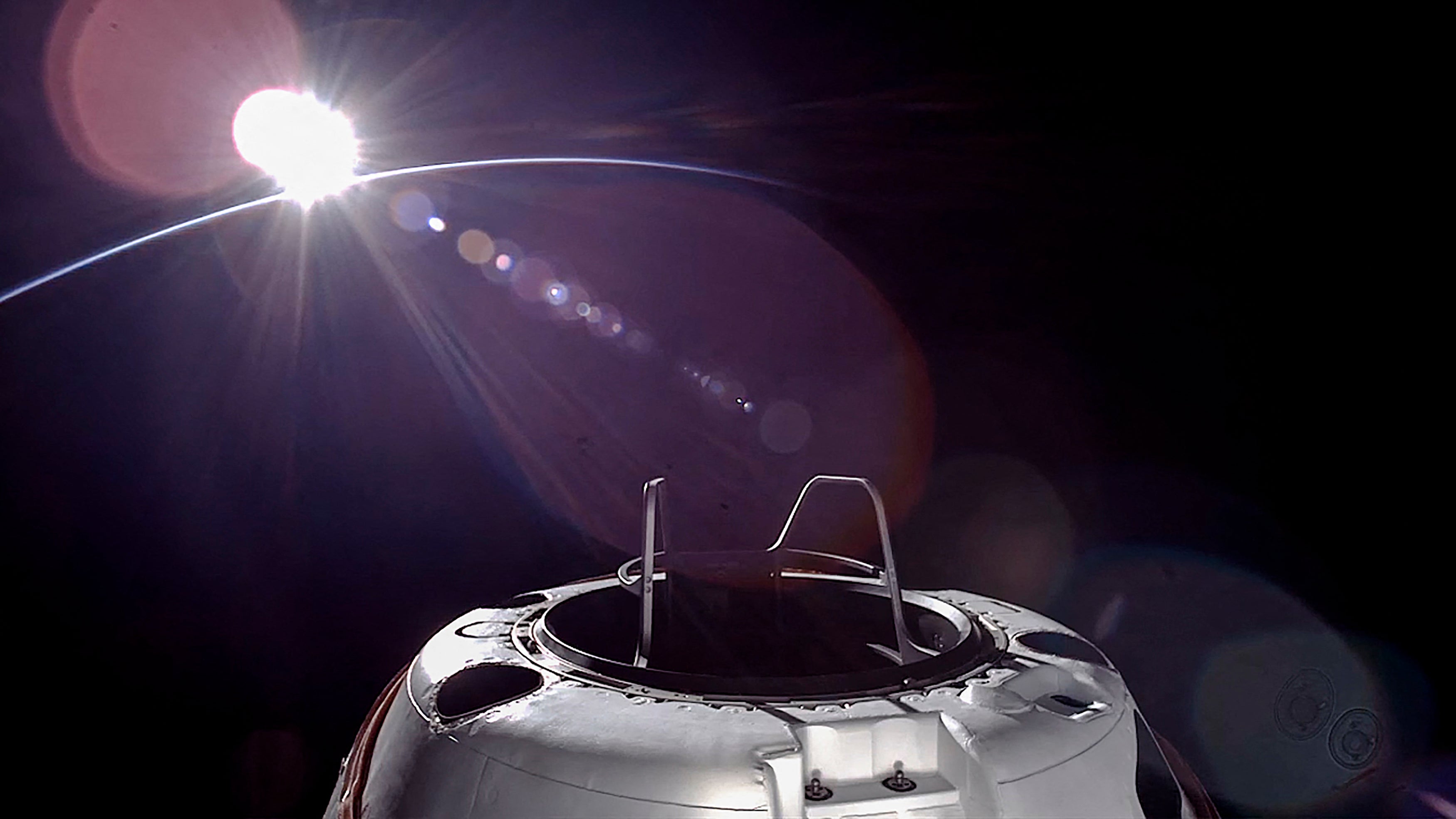Why a billionaire just stuck his head out of a spacecraft – and the risks he faced in doing so
Team tested radiation and new suits – as well as showing off the possibilities of private space flight

Hurtling through space at 17,500 miles per hour and surrounded by a vacuum that could kill him, Jared Isaacman opened the door.
If opened that hatch too early, then the entire mission may have needed to abort and he and his crew would have been at risk of death. But that wasn’t the only danger: if there was a problem with his suit then he would have been directly exposed to the vacuum of space, which would probably have quickly proven lethal too.
As he did so, he became the first ever private space tourist to conduct a commercial spacewalk.
SpaceX, which is running the mission that commercial spaceflight programme, says that spacewalk will also help “further the advancement of human spaceflight”. Mr Isaacman’s floating out into space could help bring about the future that will allow us to become an “interplanetary” species, the company has said.
That is because Mr Isaacman’s trip was not only a very expensive piece of space tourism – the price of which has not been disclosed but likely runs to hundreds of millions of dollars – though critics will say it is that, too. It also allowed SpaceX to test suits that could be used in future, even more pioneering spacewalks, which could be part of even more pioneering missions.
The very way that the spacewalk was conducted was entirely new. Even before the spacewalk had begun, when the hatch was opened, new records were broken: the four inside the capsule were all exposed to the vacuum of space, becoming the first four astronauts to do so at the same time.
That is because the spacewalk did not take place in the usual way, with an air lock that allows the astronaut to venture from the relative safety, pressure and air inside their spacecraft or space station and into the vacuum. Instead, all four were inside new SpaceX suits that are built to withstand the harsh environment of space – and so the whole spacecraft could be opened up, even to those who would stay behind.
Mr Isaacman and Sarah Gillis, a SpaceX engineer who is also part of the Polaris Dawn mission, were then able to venture out with the help of “Skywalker”, a mobility aid that allows astronauts to move around in space more easily. Once they were out there, they could test how the suit was to move around in, and how comfortable its conditions were, which should help future work on those same suits.
But the spacewalk is not the only bit of the mission that will allow the astronauts to come back with useful information. The spacecraft is travelling far enough from Earth that it will pass through the Van Allen radiation belts.
There, energetic charged particles are trapped by the “magnetosphere” that surrounds the Earth and is formed by its magnetic fields. In that area, radiation is particularly high.
As they fly through that area, one of their experiments will be to study the radiation there to better understand how it might affect the human body, in one of the 36 experiments they will conduct on their journey.
Understanding that radiation will be key to safely designing future missions. While astronauts have passed safely through the area before – such as in the Apollo missions – future trips such as those to Mars could mean being exposed to radiation for much longer times, and so it is essential to ensure that they and their equipment will not be damaged by that activity.
Perhaps the biggest effect of the trip, however, is to help promote private space travel. A range of companies including Jeff Bezos’s Blue Origin have been promoting trips to space as a kind of extreme and expensive tourism.
Experts remain unconvinced about whether those trips really represent a meaningful development in space exploration. But if there are useful versions of such trips, then the one undertaken by Mr Isaacman is probably it.
Join our commenting forum
Join thought-provoking conversations, follow other Independent readers and see their replies
Comments
Bookmark popover
Removed from bookmarks